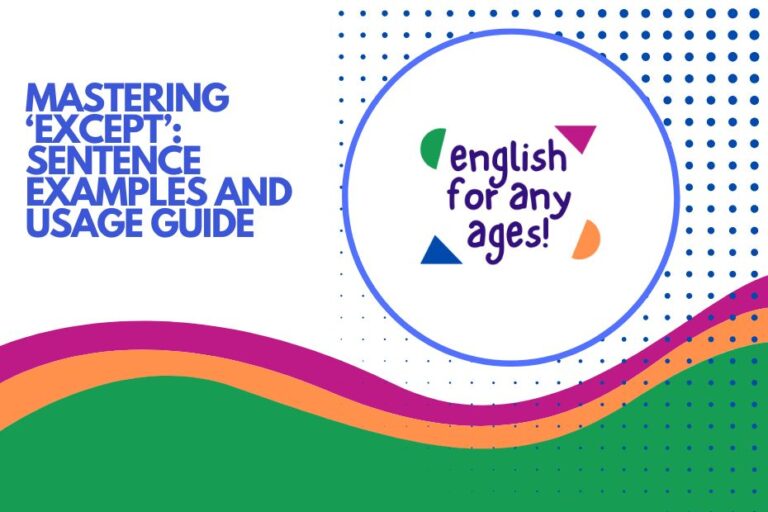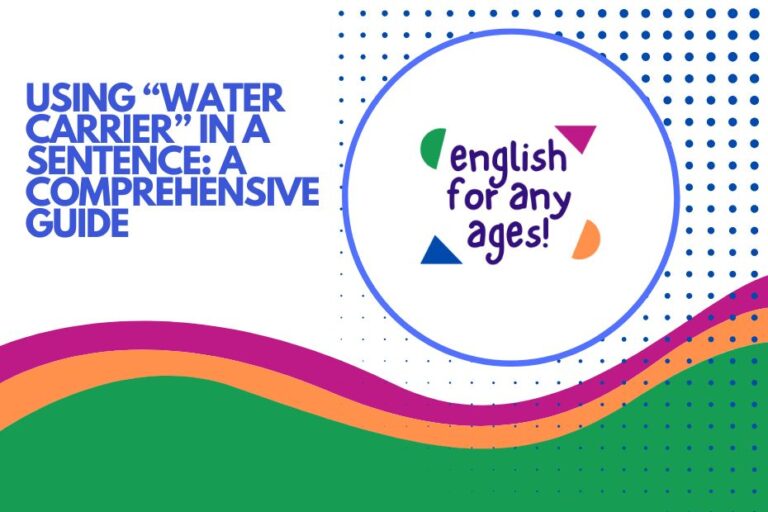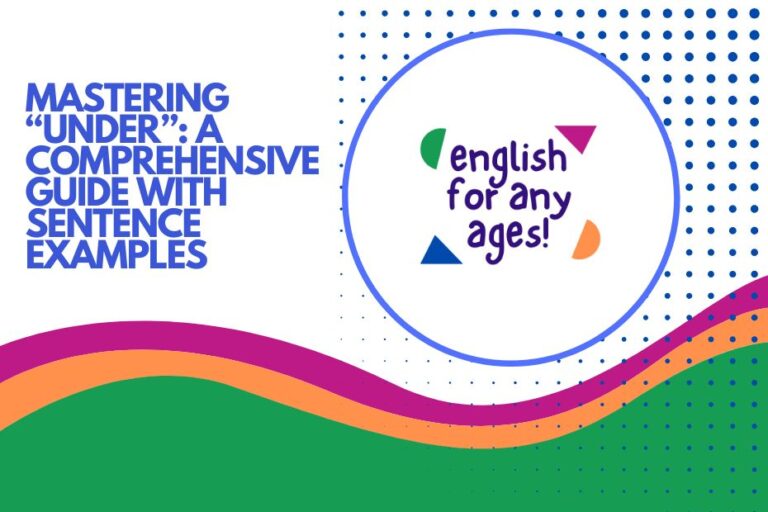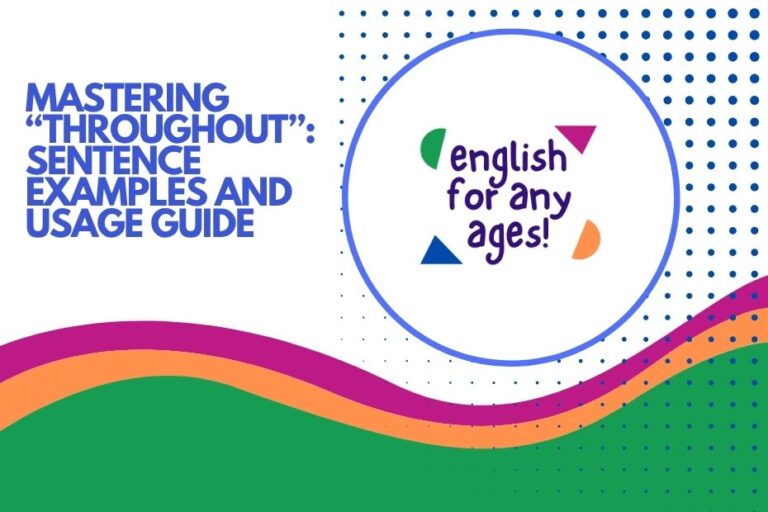How to Use “Eco-Friendly” in a Sentence: A Comprehensive Guide
Understanding how to correctly use the term “eco-friendly” is crucial in today’s world, where environmental consciousness is increasingly important. This article provides a detailed guide on the proper usage of “eco-friendly,” covering its definition, structural elements, various applications, and common mistakes.
Whether you’re a student, a professional, or simply someone interested in improving your English, this guide will equip you with the knowledge to use “eco-friendly” confidently and accurately.
Table of Contents
- Introduction
- Definition of Eco-Friendly
- Structural Breakdown
- Types and Categories
- Examples of Eco-Friendly Usage
- Usage Rules
- Common Mistakes
- Practice Exercises
- Advanced Topics
- FAQ
- Conclusion
Introduction
In an era where environmental sustainability is paramount, the term “eco-friendly” has become a ubiquitous adjective. Its correct usage is essential for clear and effective communication, whether you’re writing reports, engaging in conversations, or crafting marketing materials.
This comprehensive guide aims to demystify the nuances of “eco-friendly,” providing a thorough understanding of its grammatical function, structural elements, and diverse applications. By mastering the concepts presented here, you’ll be well-equipped to use “eco-friendly” with confidence and precision, contributing to more impactful and environmentally conscious discourse.
This article is designed for English language learners, writers, and anyone seeking to enhance their understanding of environmental terminology.
Definition of Eco-Friendly
Eco-friendly is an adjective that describes something that is not harmful to the environment. It indicates that a product, service, or practice is designed to minimize negative impacts on ecosystems, natural resources, and overall environmental health. The term encompasses a wide range of considerations, including reducing pollution, conserving energy, using sustainable materials, and minimizing waste. Understanding the multifaceted nature of “eco-friendly” is crucial for its accurate and responsible use.
The term’s meaning extends beyond simply being “green” or “natural.” It implies a conscious effort to mitigate environmental damage and promote sustainability. An eco-friendly product, for instance, might be made from recycled materials, manufactured using renewable energy, or designed for durability and longevity to reduce the need for frequent replacements.
Similarly, an eco-friendly practice could involve conserving water, reducing carbon emissions, or protecting biodiversity. The overarching goal is to minimize the ecological footprint and contribute to a healthier planet.
Structural Breakdown
The term “eco-friendly” is a compound adjective, formed by combining the prefix “eco-” with the adjective “friendly.” Let’s break down each component:
- Eco-: This prefix is derived from the word “ecology,” which refers to the study of the relationships between living organisms and their environment. In this context, “eco-” signifies a connection to the environment or ecological considerations.
- Friendly: This adjective indicates that something is harmless or beneficial. When combined with “eco-,” it suggests that the subject is not harmful to the environment.
Therefore, “eco-friendly” literally means “friendly to the environment.” Grammatically, it functions as an adjective, modifying nouns to describe their environmental impact. It can be used in various sentence structures, typically preceding the noun it modifies, or following a linking verb.
Understanding the structure of the word helps in grasping its meaning and usage. It’s important to remember that “eco-friendly” is a descriptive term that highlights the environmentally conscious attributes of a subject.
By recognizing its components, we can better appreciate the nuances and implications of its use.
Types and Categories
While “eco-friendly” is a general term, it can be applied to various categories of products, practices, and services. Here are some common types and categories:
Eco-Friendly Products
These are goods designed and manufactured to minimize environmental impact. Examples include:
- Recycled products: Made from materials that have been previously used.
- Sustainable products: Sourced from renewable resources and managed responsibly.
- Biodegradable products: Capable of breaking down naturally in the environment.
- Energy-efficient products: Designed to consume less energy during operation.
Eco-Friendly Practices
These are actions and behaviors that reduce environmental harm. Examples include:
- Recycling: Separating and processing waste materials for reuse.
- Composting: Decomposing organic waste to create nutrient-rich soil.
- Conserving water: Reducing water usage through efficient practices.
- Reducing carbon footprint: Minimizing greenhouse gas emissions.
Eco-Friendly Services
These are services that prioritize environmental sustainability. Examples include:
- Sustainable transportation: Using public transport, cycling, or electric vehicles.
- Green building: Constructing and operating buildings in an environmentally responsible manner.
- Eco-tourism: Traveling in a way that minimizes environmental impact and supports local communities.
- Renewable energy providers: Supplying electricity from sources like solar, wind, and hydro power.
Understanding these categories allows for a more nuanced application of the term “eco-friendly.” It’s important to consider the specific context and characteristics of the subject when describing it as eco-friendly.
Examples of Eco-Friendly Usage
The term “eco-friendly” can be used in various contexts to describe products, practices, and services. The following tables provide numerous examples to illustrate its usage in different sentence structures.
Examples with Products
The following table showcases how “eco-friendly” can be used to describe various products. Pay attention to the placement of the adjective and the nouns it modifies.
| Sentence |
|---|
| This eco-friendly detergent is made from plant-based ingredients. |
| They sell a range of eco-friendly cleaning products. |
| The company is committed to producing eco-friendly packaging. |
| We need more eco-friendly alternatives to plastic. |
| The store specializes in eco-friendly furniture. |
| She always buys eco-friendly diapers for her baby. |
| These eco-friendly bags are made from recycled materials. |
| The hotel provides eco-friendly toiletries to its guests. |
| He prefers to use eco-friendly paints for his artwork. |
| The restaurant uses eco-friendly containers for takeout orders. |
| This eco-friendly phone case is biodegradable. |
| They offer a variety of eco-friendly kitchen gadgets. |
| The brand is known for its eco-friendly clothing line. |
| These eco-friendly toys are safe for children. |
| The company promotes the use of eco-friendly building materials. |
| She uses only eco-friendly cosmetics. |
| This eco-friendly water bottle is reusable. |
| They are developing new eco-friendly technologies. |
| The farm uses eco-friendly pest control methods. |
| These eco-friendly pencils are made from recycled paper. |
| The new product line features eco-friendly sunscreens. |
| He chose an eco-friendly coffee maker for his kitchen. |
| The store has a section dedicated to eco-friendly school supplies. |
Examples with Practices
This table illustrates how “eco-friendly” is used to describe different practices that benefit the environment.
| Sentence |
|---|
| Recycling is an eco-friendly practice that everyone should adopt. |
| Composting is an eco-friendly way to reduce food waste. |
| Water conservation is an eco-friendly habit. |
| Using public transportation is an eco-friendly alternative to driving. |
| The city promotes eco-friendly landscaping techniques. |
| Reducing meat consumption is an eco-friendly choice. |
| Planting trees is an eco-friendly activity. |
| They implemented eco-friendly waste management strategies. |
| Supporting local farmers is an eco-friendly practice. |
| Choosing reusable bags is an eco-friendly action. |
| The community encourages eco-friendly gardening. |
| Using less plastic is an eco-friendly decision. |
| They advocate for eco-friendly farming methods. |
| Walking or biking is an eco-friendly way to travel short distances. |
| The school teaches students about eco-friendly living. |
| Conserving energy is an eco-friendly behavior. |
| They promote eco-friendly cleaning routines. |
| Using rainwater for gardening is an eco-friendly solution. |
| The company adopted eco-friendly printing practices. |
| Supporting businesses with eco-friendly policies is important. |
| Reducing paper usage is an eco-friendly step. |
| They practice eco-friendly pest control in their garden. |
| Buying in bulk is an eco-friendly strategy to reduce packaging. |
Examples with Services
This table demonstrates how “eco-friendly” is used to describe services that prioritize environmental sustainability.
| Sentence |
|---|
| The hotel offers eco-friendly cleaning services. |
| They specialize in eco-friendly landscaping. |
| The company provides eco-friendly transportation options. |
| We need more eco-friendly energy providers. |
| The city promotes eco-friendly tourism. |
| They offer eco-friendly pest control services. |
| The restaurant uses eco-friendly delivery services. |
| The company promotes eco-friendly waste disposal. |
| They provide eco-friendly moving services. |
| The airline offers eco-friendly travel packages. |
| The car rental company has eco-friendly vehicle options. |
| They specialize in eco-friendly home renovations. |
| The cleaning service uses only eco-friendly products. |
| They offer eco-friendly lawn care services. |
| The business provides eco-friendly consulting services. |
| They specialize in eco-friendly event planning. |
| The company offers eco-friendly printing services. |
| They provide eco-friendly car wash services. |
| The shop offers eco-friendly dry cleaning services. |
| They specialize in eco-friendly interior design. |
| The company provides eco-friendly recycling services. |
Examples in Comparative Sentences
The term “eco-friendly” can also be used in comparative sentences to highlight the environmental benefits of one option over another.
| Sentence |
|---|
| Electric cars are more eco-friendly than gasoline-powered vehicles. |
| Reusable bags are more eco-friendly than plastic bags. |
| Solar energy is a more eco-friendly source of power than coal. |
| Sustainable farming is more eco-friendly than conventional agriculture. |
| Bamboo is a more eco-friendly material than plastic. |
| Organic cotton is more eco-friendly than synthetic fabrics. |
| Public transportation is more eco-friendly than driving alone. |
| Composting is more eco-friendly than throwing food waste in the trash. |
| LED lighting is more eco-friendly than incandescent bulbs. |
| Reusable containers are more eco-friendly than disposable ones. |
| Plant-based diets are more eco-friendly than meat-heavy diets. |
| Refilling water bottles is more eco-friendly than buying new ones. |
| Using natural cleaning products is more eco-friendly than chemical cleaners. |
| Air drying clothes is more eco-friendly than using a dryer. |
| Buying locally is more eco-friendly than importing goods. |
Usage Rules
To use “eco-friendly” correctly, it’s important to follow these usage rules:
- Placement: “Eco-friendly” typically precedes the noun it modifies. For example, “eco-friendly products,” “eco-friendly practices,” or “eco-friendly services.”
- Hyphenation: The term is usually hyphenated as “eco-friendly.”
- Context: Ensure that the subject you are describing as “eco-friendly” genuinely has a reduced environmental impact. Avoid using the term loosely or misleadingly.
- Specificity: When possible, provide specific details about how the product, practice, or service is eco-friendly. For example, “This product is made from recycled materials” or “This service uses renewable energy.”
- Accuracy: Avoid exaggerating the environmental benefits. Use accurate and verifiable information to support your claims.
Following these rules will help you use “eco-friendly” accurately and responsibly, contributing to clearer and more effective communication about environmental sustainability.
Common Mistakes
Here are some common mistakes to avoid when using “eco-friendly”:
- Misspelling: Incorrectly spelling the term as “ecofriendly” (without a hyphen) or “eco friendly” (two separate words).
- Overuse: Using “eco-friendly” too frequently, which can make your writing sound repetitive and less impactful.
- Misleading claims: Describing something as “eco-friendly” when it has minimal or no environmental benefits.
- Lack of specificity: Failing to provide details about why something is considered eco-friendly.
The table below provides examples of correct and incorrect usage:
| Incorrect | Correct |
|---|---|
| The ecofriendly product is expensive. | The eco-friendly product is expensive. |
| This is a very eco friendly solution. | This is a very eco-friendly solution. |
| The company claims to be eco-friendly, but it doesn’t recycle. | The company claims to be eco-friendly, but it doesn’t recycle. |
| It’s eco-friendly because it’s green. | It’s eco-friendly because it’s made from recycled materials and reduces waste. |
| This product is eco friendly. | This product is eco-friendly. |
By being aware of these common mistakes, you can avoid errors and use “eco-friendly” with greater accuracy and confidence.
Practice Exercises
Test your understanding of “eco-friendly” with these practice exercises.
Exercise 1: Fill in the Blanks
Fill in the blanks with the correct form of “eco-friendly.”
| Question | Answer |
|---|---|
| 1. They sell a variety of _________ cleaning supplies. | eco-friendly |
| 2. Using reusable bags is an _________ habit. | eco-friendly |
| 3. The company is committed to developing _________ technologies. | eco-friendly |
| 4. This _________ detergent is made from natural ingredients. | eco-friendly |
| 5. We need to promote _________ practices in agriculture. | eco-friendly |
| 6. The hotel provides _________ toiletries. | eco-friendly |
| 7. She prefers to use _________ paints. | eco-friendly |
| 8. The restaurant uses _________ containers. | eco-friendly |
| 9. This _________ phone case is biodegradable. | eco-friendly |
| 10. They offer _________ kitchen gadgets. | eco-friendly |
Exercise 2: Correct the Sentences
Correct the following sentences that contain errors in the use of “eco-friendly.”
| Question | Answer |
|---|---|
| 1. The ecofriendly product is on sale. | The eco-friendly product is on sale. |
| 2. This is a eco friendly alternative. | This is an eco-friendly alternative. |
| 3. They claim to be eco friendly but use excessive packaging. | They claim to be eco-friendly but use excessive packaging. |
| 4. It’s eco-friendly because it’s natural. | It’s eco-friendly because it’s made from sustainable materials. |
| 5. This product is eco friendly and cheap. | This product is eco-friendly and affordable. |
| 6. It’s a eco friendly choice. | It’s an eco-friendly choice. |
| 7. This is a eco-friendly way. | This is an eco-friendly way. |
| 8. The company is eco friendly. | The company is eco-friendly. |
| 9. They sell eco friendly products. | They sell eco-friendly products. |
| 10. We need more eco friendly options. | We need more eco-friendly options. |
Exercise 3: Sentence Construction
Create sentences using “eco-friendly” to describe the following:
- A reusable shopping bag
- A solar-powered charger
- A composting system
- A bicycle
- A water-saving showerhead
Example answers:
- This eco-friendly shopping bag is made from recycled cotton.
- The eco-friendly solar-powered charger is perfect for outdoor activities.
- The eco-friendly composting system reduces food waste and creates nutrient-rich soil.
- Using a bicycle is an eco-friendly way to commute to work.
- This eco-friendly water-saving showerhead helps conserve water.
Advanced Topics
For advanced learners, consider these more complex aspects of “eco-friendly”:
- Greenwashing: Be aware of the practice of “greenwashing,” where companies falsely promote their products or practices as eco-friendly to deceive consumers.
- Life Cycle Assessment: Understand the concept of Life Cycle Assessment (LCA), which evaluates the environmental impact of a product or service throughout its entire life cycle, from raw material extraction to disposal.
- Certifications: Familiarize yourself with eco-labels and certifications, such as Energy Star, Fair Trade, and USDA Organic, which indicate that a product or service meets specific environmental standards.
These advanced topics will help you critically evaluate environmental claims and make informed decisions about eco-friendly products and practices.
FAQ
Here are some frequently asked questions about the use of “eco-friendly”:
- What does “eco-friendly” really mean?
Eco-friendly refers to products, services, or practices that minimize harm to the environment. This includes reducing pollution, conserving resources, and promoting sustainability. It’s a broad term that encompasses various environmental considerations.
- Is “eco-friendly” the same as “sustainable”?
While the terms are related, they are not exactly the same. “Eco-friendly” focuses on minimizing environmental harm, while “sustainable” encompasses a broader range of considerations, including economic and social factors, to ensure long-term viability and resource availability.
- How can I tell if a product is truly eco-friendly?
Look for eco-labels and certifications from reputable organizations. Research the company’s environmental practices and read reviews from other consumers. Be wary of vague or unsubstantiated claims.
- Can a product be partially eco-friendly?
Yes, a product can have some eco-friendly features or characteristics, but it may not be entirely free of environmental impact. For example, a product might be made from recycled materials but still require significant energy to manufacture.
- Is it important to use hyphen when writing “eco-friendly”?
Yes, it is important to use a hyphen in “eco-friendly” to indicate that it is a compound adjective. Without the hyphen, it may be read as two separate words, which can change the meaning and clarity of the sentence. Using the hyphenated form is the grammatically correct way to use the term.
- How to use eco-friendly in a sentence?
Eco-friendly is an adjective, so it should be used to describe a noun. For example, “This is an eco-friendly product” or “They practice eco-friendly habits.” The term usually comes before the noun it describes.
- What are some synonyms for “eco-friendly”?
Some synonyms for “eco-friendly” include environmentally friendly, green, sustainable, earth-friendly, and ecologically sound. These terms can be used interchangeably in many contexts to describe products or practices that minimize environmental impact.
- Is it better to say “eco-friendly” or “environmentally friendly”?
Both “eco-friendly” and “environmentally friendly” are acceptable and widely used. “Eco-friendly” is a more concise and informal term, while “environmentally friendly” is more formal and descriptive. The choice between the two often depends on the context and the desired tone of the writing.
Conclusion
Mastering the use of “eco-friendly” is essential for effective communication about environmental sustainability. By understanding its definition, structural elements, usage rules, and common mistakes, you can use the term accurately and confidently.
Remember to be specific, avoid misleading claims, and stay informed about advanced topics like greenwashing and life cycle assessment. With this knowledge, you’ll be well-equipped to contribute to more impactful and environmentally conscious discussions.
Continue to practice using “eco-friendly” in various contexts to solidify your understanding. Engage in conversations about environmental issues, read articles and reports on sustainability, and critically evaluate the environmental claims of products and services.
By actively applying your knowledge, you’ll not only improve your English skills but also become a more informed and responsible consumer and citizen. Embrace the opportunity to promote eco-friendly practices and contribute to a healthier planet.






